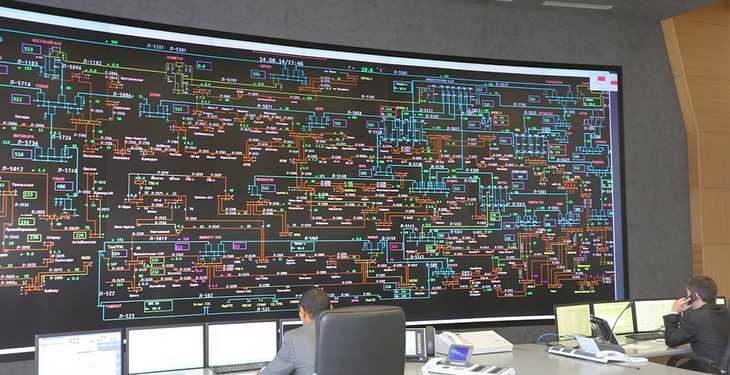UPDATE on Feb 1st
On January 31st, the price on the OPCOM day-ahead market (DAM) reached a record level of 680 lei per MWh, for 1 February, 18-20 interval. Throughout the day, prices in Romania were perfectly correlated with those in Hungary.
UPDATE on Feb 2nd
The most relevant employers’ associations in the electricity market had communicated their standpoints: ACUE members asked for a quickly official analysis of the way the electricity markets are functioning, while AFEER explained that more flexible the wholesale market, less distortions in electricity trading.
Original article
Prices nearly trippled in the Romanian electricity market this January, and has put providers under fire regardless of their size, and authorities are analyzing last month’s trades, when energy has reached 650 lei (144 euros) per MWh. Two transactions with large volumes of energy are under scrutiny, as they were made at unbalanced prices, say officials of the energy regulatory body (ANRE), while the Competition Council representatives were called to assist in clarifying the situation.
“Competition Council examines the two transactions, and did not open a formal investigation,” told energynomics.ro insitution’s officials.
Disastrous situation for suppliers
Although just one large trader and electricity supplier announced bankruptcy yet, three – to five companies have stopped providing for contracts in force, said Ion Lungu, the president of electricity providers’ association, AFEER.
“For now we have a sole supplier that declared insolvency, Transenergo, but lately there have been several companies that have notified their partners and hence counter-parties, that they can no longer fulfill contracts and demanded their suspension, though not termination – but this also has disastrous consequences,” said Lungu.
Although one can say that such movements put out of the market small traders suppliers, also larger firms are affected.
“It’s hard to say (that suppliers getting out of the market are) small, because the (trader) which announced its insolvency was among the top three in the market, and another one who notified its inability to fulfill contractual conditions was of a similar size – that’s the great surprise for us too, that are major suppliers who work long enough in the market that are now in major difficulty,” the AFEER president also said.
Prices remained inexplicably high
Normally, after the demand shock during the heavy snowfall, the prices should have fallen, says Lungu.
“It is surprising for us too this very high price, especially since there were better weather conditions, including the Danube water level recovered. Our expectations were that prices would be lower.”
High costs arise especially for suppliers who buy energy on the day-ahead market (PZU) at a very high price and gives it to final consumers under contracts in which prices were initially set at the time of conclusion at a lower level, explains Lungu.
“Suppliers are losing, and loss may be sustained for quite a short time, whereas margins (profit- e.n.) are extremely low due to the very high level of competition at the end-consumers in the retail market.”
One possible scenario would be to reopen negotiations on contracts with consumers, so as suppliers should be able to support the contracts.
“If consumers do not accept, the suppliers remain with the loss, which if sustained- good, if not- (enter) insolvency, bankruptcy.”
Why are prices high?
Traders said, however, that main reasons for the high price of energy includes lack of trading instruments offered by the power exchange, OPCOM.
“The large pricing in the energy market in this period can have multiple reasons. Alongside classic reasons, generated maybe by an increased consumption, a large demand for export or limited production, due to momentary technology limitations (low river flows, low coal stocks, etc), there is also fact that the Romanian energy market does not offer flexible trading instruments, as we find in all of the other European markets. We donțt have many options, and those offered at this moment are limited, ridgid and very bureaucratic,” told energynomics.ro, Daniel Pintilie, Statkraft Romania country manager and member of AFEER.
There are no bilateral contracts direclty negotiated in the market, and the market does not allow flexible trading within hourly profiles, those being just two of the most important issues. “This automatically reflects in less trading options, an energy oversupply on the Spot market and an extremely high price in the OPCOM market,” says Pintilie.
AFEER will ask ANRE to change the situation in the market, as due to lack of instruments, the price crises can repeat.
Enel: The system is near its limits
“I do not know how and if the consumers will be impacted. Though, maybe, they will not feel an effect in the final price, in the long run they might feel this turmoil in the wholesale market in their bills,” said Pintilie.
“This crisis reveals the necessary conditions for a functioning, competitive market,” also said ENEL officials, in a press release.
“The system is near its limits, and some suppliers unilaterally canceled contracts to profit from these record levels of prices, leaving customers without service supply that they were counting on, in accordance to signed agreements … In these difficult times, we can really distinguish between market players who do what they promised and those who violate their commitments,” the ENEL officials add.
“In the energy market should prevail the long-term perspective, and not the speculative behavior and lack of responsibility. The regulatory framework should encourage long-term projects, not speculative behavior”, ENEL officials say.
ANRE has launched on Monday an investigation into the case of two energy contracts suspected of breaking the law, as high-volume transactions were made at prices unusually high.
Prices on the spot market (PZU) of the energy exchange reached these days record- levels, of more than 650 lei per MWh, while in the forward market prices are up to four times lower (151 lei per MWh).

